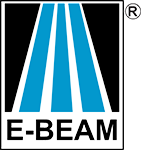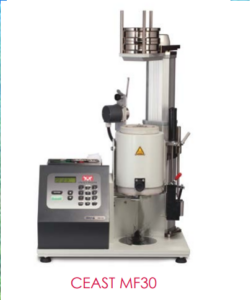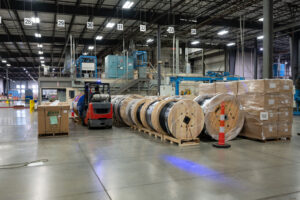[embedyt] https://www.youtube.com/watch?v=Zsa0oj8wlFM[/embedyt]
Join the E-BEAM Tech Services duo of Olivia Radcliffe and Dr. Gustavo Varca as they explore some of your FAQs about sterilizing specialty products.
(TL;DR: Beyond processing truckload quantities, e-beam technology is a good fit for specialty products that have small lots and vary from shipment to shipment, like 3D printed products and parts for bone replacements. E-beam is a good fit for 3 main reasons: 1. E-beam has the capability to deliver a very precise dose, 2. E-BEAM Services has temperature control systems in place that can be used for sensitive products, 3. E-BEAM has fast turnaround time options, which can be utilized in quick-turn scenarios, such as personalized products for surgeries, etc.)
Olivia: Alright! Hey everybody, I’m Olivia Radcliffe and I am here with Dr. Gustavo Varca. Gustavo, let you go ahead and introduce yourself a little bit here.
Gustavo: Hello everyone. Good morning. Good afternoon. Depends on where you are. I am Dr. Varca also known as Dr. V and I’m going to be speaking with you guys a little bit about radiation technologies.
And today I think we have a couple of questions again, that people send to us and I’ll be more than happy to answer them.
Olivia: So, yeah, we’ve had some questions lately about e-beam processing of products that require special handling and special storage things that may not be compatible with other sterilization processes or be really hard to process. And so trying to figure out how e-beam actually can help those products, what the processing actually looks like. So I think if we just go through, Gustavo, and just maybe give some examples and talk about some different specialty products that we’ve seen that e-beam technology is a good fit for, you know, in general. If you’d have your favorites you liked to talk about.
How can e-beam help with the sterilization of specialty products?
Gustavo: Okay, I’ll try to summarize that. Cause that was a long, long question.
So, you know, when we talk about radiation technologies, we’re talking about a means or tool to sterilize the product or get the product processed, right? It’s either for crosslinking or for sterilization or for simultaneous processes. We’re really talking about getting the result the customer is expecting.
But on the other aspect, there are logistical aspects. There are lots of aspects that need to be taken into consideration. E-beam, electron beam technologies, is kind of interesting because it allows people to deliver the dose very fast when compared to other technologies. So this gives service providers that have e-beam the ability to have a good turn and a fast turnaround.
On the other hand, electrons have mass, so they have limited penetration. So you can’t do a bulk package. But depending on what we’re talking about, it’s actually helpful that this phenomenon happens because if we’re talking about maintaining a specific temperature range within a container, it’s a lot different than maintaining a specific temperature range in a single unit or in a small case.
So the fact that we can deliver to those very fast also allows us to reduce the timing between taking them out of the package from the freezers, putting them in whatever configuration they’re going to be run at, process them and put them back. This processing window becomes shorter. So electron beam technology allows faster processing, which in the end allows for better temperature control.
We are also able to process it at a controlled temperature. We can process it at cryogenic temperatures, which is below water freezing point. We can also do it at refrigerated conditions, or we can even heat them in some cases where want to deplete oxygen and in solutions, for instance.
So the ability to deliver a fast dose and have precise control of it, and also the ability to have consistency in delivering the dose in units as opposed to bulk scenarios actually can be very helpful for 3d printed objects, for instance. Parts that are manufactured individually for specific purposes.
They can be a great fit for electron beam because of the faster qualification stages, the faster delivery, precise delivery of dose, and of course, a better temperature control.
Olivia: What are some examples? What are some examples of products like that?
What are some examples of these specialty products?
Gustavo: Catheters, right? Custom design bone parts for bone replacement. You know, they have interesting density, but they also are customized. You can’t put them in a box. If you’re talking about a child, a patient that is, you know, a teenager, a patient that isn’t an adult, they will have different bones sizes. So you can’t group them. You have to process them individually.
You know, some metal parts, even titanium alloys that are used in biomedical or for biomedical applications, they can be pretty tricky. And the ability to process them individually may actually bring lots of benefits as opposed to a bulk scenario. So, specific requirements may lead to specific types of processing that can be achieved using electron beam technology.
Olivia: Right. Right. And so e-beam can kind of handle really small lot sizes of things. Very customized runs, as well as larger sizes. But right now you’re talking more about just individual boxes coming?
Gustavo: Yeah. Ultimately, yes, that’s exactly what I’m talking about. You know, people in those businesses are always looking for alternatives for truckload volumes and huge volumes, but what we’re talking about is a specific niche, a specific demand for things that can change people’s lives. Electron beam technology can offer a lot towards those needs and applications. Right?
So, I wanted to highlight that also because we were at the MD&M show recently, and we were approached by multiple companies that were actually building customized parts for multiple applications. And it’s hard for them to understand how to qualify. First, people don’t even want to talk to them because you’re never going to have a truck or the same parts. They’re customized. They will show up as 2, 3, 4 parts. And each one of them will need to have specific dose settings specific dose parameters.
And I feel like e-beam technology is a message that needs to be spread in that niche as well.
Olivia: So if someone has this sort of customized product that they need to have sterilized, what do you recommend as their first steps getting started? How do they go about finding someone? What questions should they be asking? What should they be looking for?
What’s the first step for someone with a specialty product?
Gustavo: Well, I guess the first step is understanding what are the material requirements, what type of sterilization would the material tolerate. Could you use a chemical process? Do you need to use a physical process, you know, and do you have it available? And if you don’t, then, you know, you gotta find a solution for that.
Ideally, they should consider that in a design phase, but that’s really rare to happen, I would say. But, you know, they should find a good service provider and, and start working on identifying a compatibility, which we know as compatibility tests, material exposure tests basically we would expose parts to different doses and try to understand if the material would tolerate that type of processing.
And if so, how many cycles in case you need to reprocess it at a given point, right?
Olivia: So, essentially your first step should be to contact E-BEAM Services.
Gustavo: Well exactly!
Olivia: So once they established compatibility, what’s the next step from there? Once they know their product is good with, let’s just say e-beam, because we’re talking about e-beam.
Gustavo: They need to identify what their dose is. They to do some bioburden testing and identify what dose needs to be delivered. And ideally some sort of a dose initial dose mapping or dose study to understand that dose distribution. So once we do go through that phase, then it can become production and routine, right. So it’s a special type of dose map.
Olivia: Okay, cool. Well, thank you so much. I think that’s a good start to that conversation. Maybe we’ll go more in-depth here in a little bit. Maybe we’ll jump on again next week or something, but all right. If anyone has any questions, contact us!



